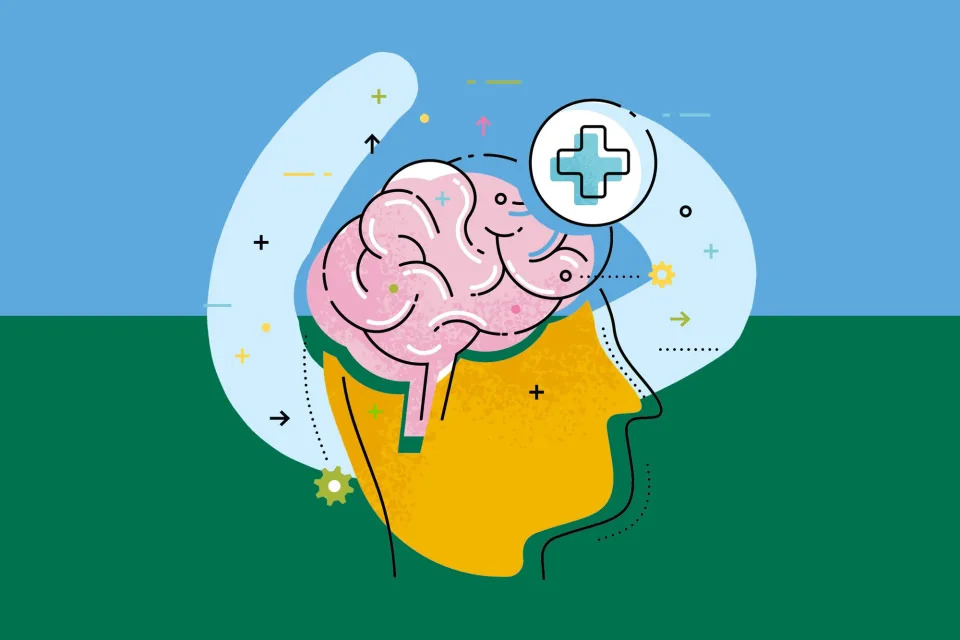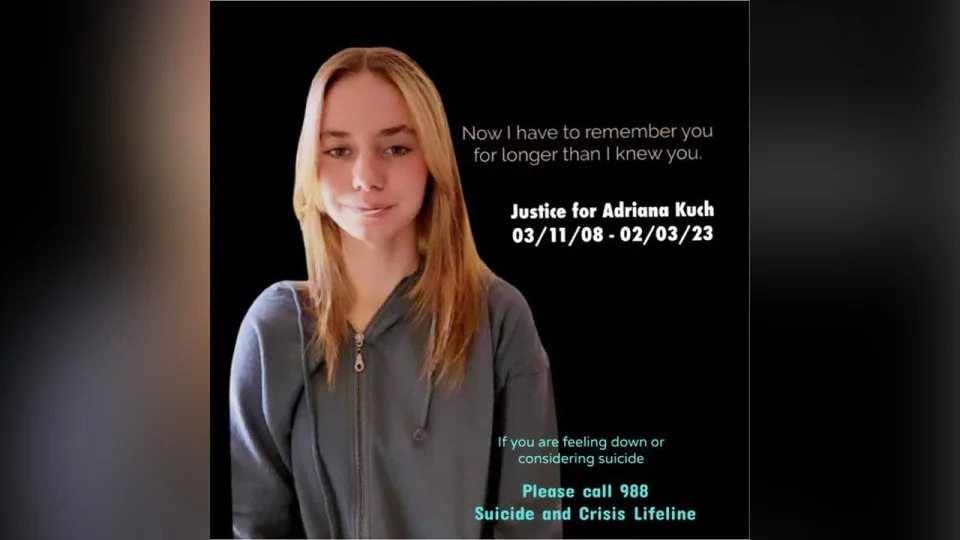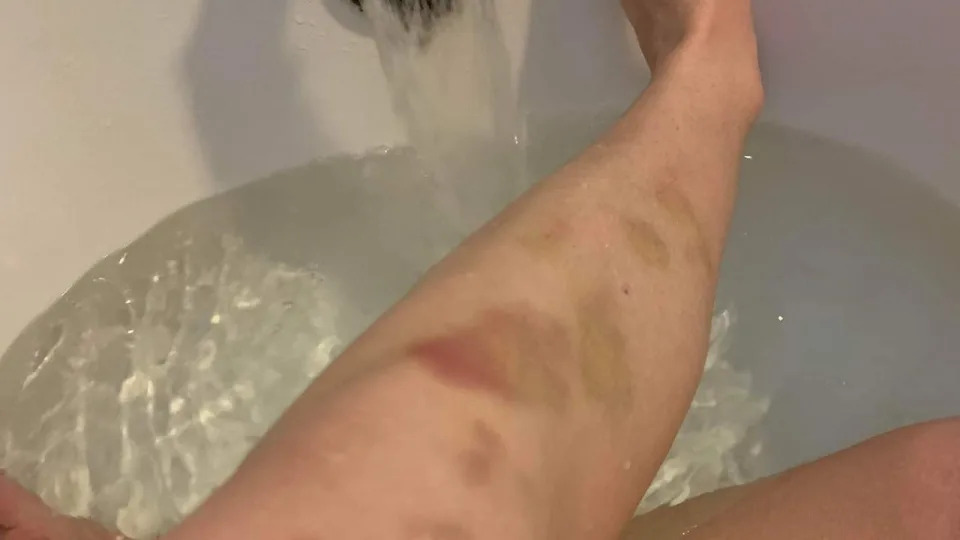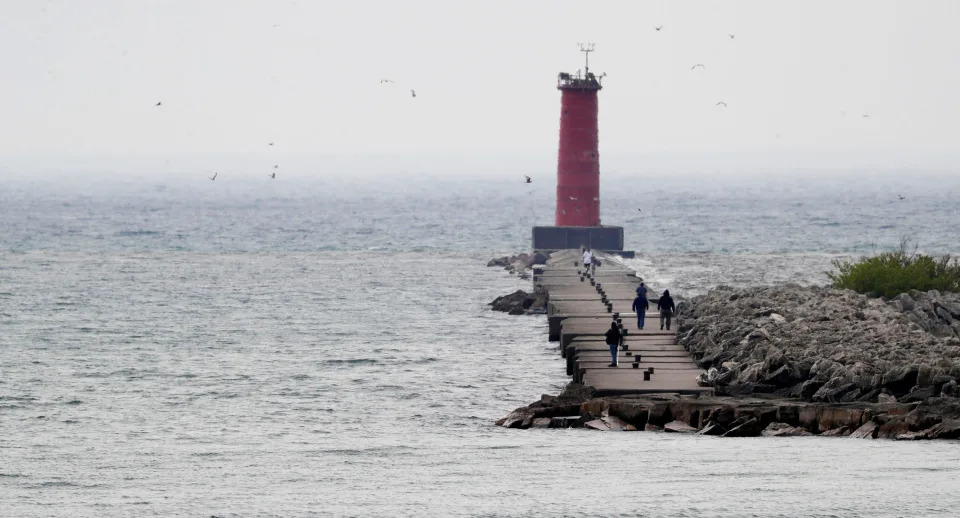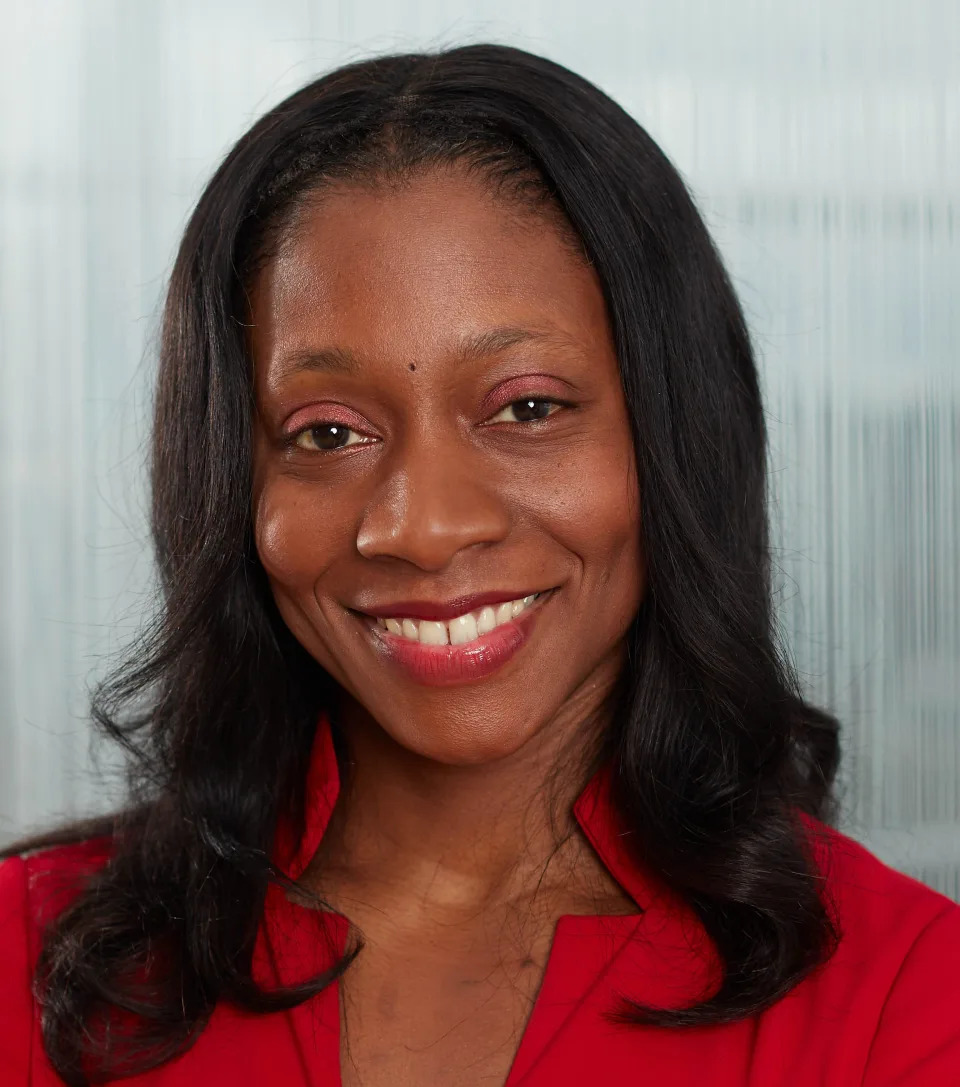The Washington Post
The crisis in American girlhood
Donna St. George, Katherine Reynolds Lewis and Lindsey Bever, The Washington Post – February 17, 2023

When Sophie Nystuen created a website for teens who had experienced trauma, her idea was to give them space to write about the hurt they couldn’t share. The Brookline, Mass., 16-year-old received posts about drug use and suicide. But a majority wrote about sexual violence.
“Every time I’ve tried, my throat feels like it’s closing, my lungs forget how to breathe,” wrote one anonymous poster. “I was sexually assaulted.”
These expressions of inner crisis are just a glint of the startling data reported by federal researchers this week. Nearly 1 in 3 high school girls said they had considered suicide, a 60 percent rise in the past decade. Nearly 15 percent had been forced to have sex. About 6 in 10 girls were so persistently sad or hopeless they stopped regular activities.
The new report represents nothing short of a crisis in American girlhood. The findings have ramifications for a generation of young women who have endured an extraordinary level of sadness and sexual violence – and present uncharted territory for the health advocates, teachers, counselors and parents who are trying to help them.
The data comes from the Youth Risk Behavior Survey, conducted by the Centers for Disease Control and Prevention from a nationally representative sample of students in public and private high schools. “America’s teen girls are engulfed in a growing wave of sadness, violence and trauma,” the CDC said.
“It’s alarming,” Education Secretary Miguel Cardona said Thursday of the report. “But as a father of a 16-year-old and 19-year-old, I hear about it. It’s real. I think students know what’s going on. I think sometimes the adults are just now realizing how serious it is.”
But high school girls are speaking out, too, about stresses that started before the pandemic – growing up in a social media culture, with impossible beauty standards, online hate, academic pressure, economic difficulties, self doubt and sexual violence. The isolation and upheaval of covid made it tougher still.
When Caroline Zuba started cutting her arms in ninth grade, she felt trapped: by conflict at home, by the school work that felt increasingly meaningless, by the image her friends and teachers had of a bubbly, studious girl. Cutting replaced the emotional pain with a physical pain.
She confided in a trusted teacher, who brought in the school counselors and her mother. But Zuba’s depression worsened and, at age 15, she attempted suicide. That sparked the first of a series of hospitalizations over the summer and subsequent school year.
Now a 17-year-old junior at a public high school in Potomac, Md., Zuba relies on therapy, medication, exercise and coping strategies. She started a mental health club at her high school to support classmates also struggling with depression, anxiety and suicidal thoughts.
At the lowest point of her depression, she said, she kept many secrets from her friends, parents and teachers because she felt stuck in her role: a cheerful high achiever who had it all together.
“My mom’s like my best friend and there’s no way she would have ever expected it,” Zuba said. “Teens are really good at hiding it, which is really sad.”
While the teen mental health crisis was clear before the CDC report, the stark findings have jolted parents and the wider public.
“These are not normal numbers,” said Surgeon General Vivek H. Murthy. “When you grow up with this, I think the risk is thinking, ‘Well, this is just how it is.'”
The reasons girls are in crisis are likely complex, and may vary by race, ethnicity, class and culture. Harvard psychologist Richard Weissbourd points out that “girls are more likely to respond to pain in the world by internalizing conflict and stress and fear, and boys are more likely to translate those feelings into anger and aggression,” masking their depression.
Weissbourd added that girls also are socialized not to be aggressive and that in a male-dominated culture girls can be gaslit into thinking there is something wrong with them when problems or conflicts arise. “They can be prone to blaming themselves,” he said.
Jean Twenge, a psychology professor at San Diego State University and author of the book “iGen,” said that increases in most measures of poor mental health in the past decade were more pronounced for girls than boys.
She said part of the problem is that digital media has displaced the face-to-face time teens once had with friends, and that teens often don’t get enough sleep. Adding to those influences are the hours teens spend scrolling social media. For girls, she said, this often means “comparing your body and your life to others and feeling that you come up wanting.”
That’s not to say everything that people do on smartphones is problematic, Twenge said. “It’s just social media in general and internet use show the strongest correlations with depression,” she said.
Ben Handrich, a school counselor at South Salem High School in Salem, Ore., said teen girls often feel that “people are watching them – that no matter what they do, there’s this invisible audience judging their movements, their actions, the way they smile, the way they eat.”
Lisa Damour, a clinical psychologist and author of “The Emotional Lives of Teenagers,” said it’s important to note that the CDC data was collected in the fall of 2021, a time when many teens were anxious about returning to in-person school and wearing masks.
“Teenagers were miserable,” Damour said. “It absolutely confirms what we were looking at clinically at that time. We don’t know what the next wave of data will tell us.”
Damour noted that the CDC findings are distressing because today’s teens, in many ways, are in better physical health and more risk-averse than most previous generations.
“We’re raising the best-behaved generation of teenagers on record,” said Damour. “They drive with seat belts, they smoke less, they have less sex, they wear helmets. They do all these things that we did not do.”
And yet they are in crisis.
Many girls across the country describe teen cultures of casual slut-shaming, of peers greeting girls with sexist slurs such as “whore” or “ho,” based on what they wear or how they look.
In Los Angeles, Elida Mejia Elias says it’s a no-win situation. “If you’re skinny, they judge you for being skinny and if you’re fat, they judge you for being fat,” explains the 18-year-old, a senior.
In ninth grade, a friend of Mejia Elias’s sent a naked picture of herself to a boy she was dating, at his urging, and he spread it around to his friends. “Everyone was talking bad about her. They were calling her names, like ‘ho,'” said Mejia Elias. “That affected her mental health. She needed to get therapy.”
In Maryland, at her Bethesda public high school, 14-year old Tulip Kaya said that girls in her friend group hear whistles or “gross comments” about their breasts and are texted unsolicited penis pictures by boys at school. “If there’s anything slightly unique about you, you’re not going to have a fun time, and you will be targeted,” she said.
Social media can be overwhelming. “On Snapchat and TikTok, you see all these pretty girls with tiny waists and a big bottom. I know I’m only 14, but it makes me feel like there’s something wrong with myself,” Kaya said. “When I start to feel like that, I will delete the app for a little while.”
Girls interviewed by The Post expressed uncertainty and self-doubt over everything from what to wear, what to post or comment on social media, what it meant if someone wasn’t following them back on a social platform, and even in daily interactions. When in-person school resumed, during the fall of 2021 for many, routine encounters and moments felt weird after a year or more of separation from peers.
“Sometimes I don’t want to wear shorts because I don’t have the body type I had in middle school,” said Leilah Villegas, of Eastvale, Calif., who ran track before the pandemic. Now in 10th grade, she’s started running again but her changed body brings pangs of self-consciousness.
Aanika Arjumand, 16, from Gaithersburg, Md., who sits on her county’s Domestic Violence Coordinating Council, said she was not surprised by the increases in sexual violence.
“We deal with a lot of cases on like teen dating violence and kind of informing schools about teen dating violence because the health curriculum right now basically does not cover abuse or sexual violence as much as it should,” she said.
School itself can sometimes be physically unsafe, as happened with Harker, a 13-year old in Savannah, Ga., who spoke on the condition that her full name not be used because of the sensitivity of the issue.
At school, she received unwanted attention from a boy in sixth grade. He would whisper in her ears and grab her shoulders. Once, he seized her across her chest and did not release her until she screamed. A teacher was nearby, but she said the boy went unpunished and remained in her classes. The teen has resorted to learning at home.
“They didn’t believe me even though there were witnesses,” she said. “A boy in school can get away with something, but if I do one mess-up, I get called out for it.
At the Bronx High School of Science in New York, 17-year-old Najiha Uddin talks about a White beauty standard perpetuated in mainstream and social media, which she says girls of color can’t possibly meet. She and others describe status-oriented peers and media messages about shoes, clothes, styles and experiences that outstrip their families’ means.
For Montanna Norman, 18, a senior at a private high school in Washington during the fall of 2021, the killing of unarmed Black men by police was foremost in her mind after the murder of George Floyd. At the time she was the co-leader of her school’s Black Student Union. “The toll that that took on my mental health was a lot,” she said.
Some of her friends have contemplated, or attempted, suicide, Norman said. “You wish you could do more to help,” she said.
Garvey Mortley, a 14-year old in Bethesda, Md., who is Black, said she has been teased because of her hair and still feels microaggressions. “Racism can be a stressor for depression or a cause of depression because of the bullying that happens, not just Black kids but Asian kids and Hispanic kids who feel they are unwanted,” she said.
Students who are LGBTQ face some of the highest rates of depressive symptoms and sexual violence, including rape. In 2021, nearly 1 in 4 reported an attempt to take their life.
Rivka Vizcardo-Lichter, a student activist in Virginia, pointed out that high school is a time when many LGBTQ students are still figuring out who they are and solidifying their identity. “Even if you have an accepting environment around you, you are aware that there are millions of people who don’t want you to exist,” she said.
Some of the most alarming data collected by the CDC involved the rise in suicidal thoughts among teen girls – 24 percent of teen girls have made a plan for suicide while 13 percent have attempted it, almost twice the rate for boys.
Rich and Trinna Walker, from New Albany, Ind., searched for a therapist for their 13-year-old daughter Ella but struggled to find one in the overloaded mental health-care system during the pandemic. Once Ella finally started treatment, however, her demeanor seemed to improve, they said.
“I really felt like she was doing so much better,” Trinna Walker said. Ella had been asking her dad how she could earn extra money to buy a birthday gift for her sister. She told her mom she wanted doughnuts for breakfast.
“Then we woke up to a nightmare the next morning,” Trinna said.
Ella died by suicide on Jan. 22, 2022. Her parents said they wish someone would have alerted them to the warning signs. Unknown to them, Ella was being bullied, and she was devastated by a breakup, they said.
Now the couple is urging teens to speak up when their peers are in trouble. “It was like a bomb going off,” Rich Walker said. “It’s like it mortally wounded my wife and me and Ella’s two older sisters, and then it reverberated outwardly to her friends.”
Many of the girls interviewed for this story asked that adults listen to and believe girls, and stop dismissing their concerns as drama. “Adults don’t get all the pressure that teenage girls have to deal with, from appearance to the way they act to how smart they are, to the things they do,” said Villegas, the Eastvale 10th-grader. “It can be very overwhelming.”
Asma Tibta, a 10th-grader in Fairfax County, Va., said she is “close friends” with her mother, but doesn’t talk about mental health at home. “I haven’t told her too much. And I don’t plan to.”
In Savannah, Harker took a break from playing Roblox with her friend to be interviewed. Before heading back to the game, she had one request: “I want adults to believe young girls.”
The Washington Post’s Serena Marshall contributed to this report.
If you or someone you know needs help, visit 988lifeline.org or call or text the Suicide & Crisis Lifeline at 988.

